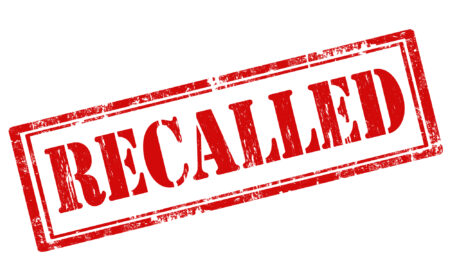About a month ago I got a notice from Amazon about recalled frozen potstickers made by Ajinomoto Foods North America that had possibly been contaminated with pieces of plastic. Amazon posted a notice from the USDA with the exact lot number and expiration date of the problematic batch. Potstickers into the garbage, easy peasy!
This got me thinking, of course, about healthcare recalls and how a patient would be LUCKY to be notified of a recalled device that they may have received during a procedure. A shocking number of health systems still do not have accurate records of which items are used in which patients, let alone the lot number associated with that item.
A recent article by MedTech Dive highlights this endemic problem: “Medical device recalls require speed to ensure patient safety. But the system used to pull defective products with potential risk of serious injury or death is clunky and uncoordinated, and results at times in recalled devices being used by or implanted in patients. Reliance on paper communications and mail services to deliver recall notifications, limited use of device-specific identifiers and a lack of data reporting standardization results in a system that can take weeks for hospitals to learn about a manufacturer’s recall and months for patients to discover they’re using or have been implanted with a defective product.” As the author further notes, “Similar issues that hamper recall communications can make locating the correct products and patients difficult. One hurdle is the lack of specific device identification.”
This is where the Unique Device Identification (UDI) system comes in and can transform the recall process and prevent such grave risks to patients. UDIs are numeric or alphanumeric codes that generally contain two parts, the device identifier (DI) and the production identifier (PI). Unfortunately, most hospitals are not using UDI data, perhaps because the FDA doesn’t require UDI to be included in recalls, despite the ability it gives providers to track recalled items quickly and accurately to individual patients. As noted in an article published in Regulatory Affairs Professionals Society (RAPS), “Without the UDI, those managing recalls must depend upon text-based, non-standard device identifiers, a practice negatively impacting medical device supply chain efficiency, increasing overall healthcare costs, and raising safety concerns for patients.”
The adoption of solutions that automate the capturing of UDI data (e.g., item identify, lot/serial number and expiration date) is essential for hospitals because it ensures the consistent identification and accurate tracking of all devices and supplies throughout their life cycle, from point of manufacturing all the way to point of care. UDI data capture technologies don’t just enable quick and easy recall management, they also prevent expired products from being used in patient procedures, as well as avoid waste, stockouts and expirations, and free up clinicians to spend more time and attention on patient care.
At VUEMED we have seen first-hand the dramatic benefits for our hospital partners of adopting RAIN RFID technology to capture the UDI data and manage their clinical inventory. Our technology works by installing Ultra-High Frequency (UHF) RFID readers and antennas, and GS1 Gen 2 passive UHF RFID tags that continuously and automatically track the movement and location of all tagged items – without the need for human intervention or special cabinetry. By turning any space – whether a supply room, procedure room, or warehouse – into a fully controlled inventory space, RAIN RFID ensures the accurate data acquisition of each medical device coming in and going out of the department, as well as used at the point of care, and tracks the item’s location at every moment.
The UDI data includes full product details such as manufacturer and description, as well as pedigree information such as lot/serial number and expiration date, and is reported to the Cloud in order to provide real-time visibility and trackability of medical devices and supplies throughout the organization. The power of the Cloud lies in its ability to store, compute, analyze and report tremendous amounts of data with easy user access, and to help turn this data into actionable information through analytical reports.
ERP and EMR interfaces put in place then ensure streamlined processes for clinicians to document UDI data, for supply chain staff to efficiently manage inventory, reorders, expirations, etc., and for administrators to monitor overall utilization, costs and contract compliance. And when used with monthly KPIs, hospitals can track changes and trends in inventory levels, purchases, utilization, cost per SKU, unused and wasted inventory, items above necessary par levels, and other metrics.
Medical devices represent one of the top expenses for specialty procedure and interventional areas. The collection, analysis and dissemination of UDI data have profound and obvious impacts on patient safety: they ensure instantaneous and easy recall management, avoid expired items from ever being placed in patients, ensure product availability for procedures, and result in accurate patient records. UDI data capture also prevents waste and saves money for hospitals in a multitude of ways, such as preventing devices from expiring on the shelves, ensuring accurate charge capture, and enabling inventory management systems to maintain a lean and optimized inventory by aligning purchases with consumption needs.
Data truly IS power–the power to analyze and decide, the power to make changes and adapt, the power to succeed and excel. Through our work we have witnessed the great extent to which key personnel (e.g., supply chain, clinical, finance) in hospitals can be empowered through accurate UDI data, and how data can be generated in real time with automated RAIN RFID technology, and then turned into actionable information using the power of Cloud computing.





